Thumb-Sided Wrist Pain in Climbers: A Case for De Quervain’s Tenosynovitis
Finally, a sunny day is in the forecast with pristine conditions. You make the trek out to work your bouldering project: the one involving a lot of funky pinch grips and thumb catches. After attempting this problem for several weeks, you link together the crux and come out on top!
You’re elated; however on the ride back home, you notice wrist pain at the base of your thumb. After giving it some thought, you realize this area has actually been nagging you for a while, but now it is impossible to ignore. That evening, you try to unwind by playing video games and texting with your friends, reminiscing on the great day. You head back to your 9-5 job for the week, waiting for your symptoms to improve, but it only seems to be getting worse. What could be going on?
This climber is likely experiencing a condition known as De Quervain’s Tenosynovitis. De Quervain’s is typically caused by overuse or an increase in repetitive activity, characterized by pain and tenderness at the base of the thumb. Within this region lies two tendons: the extensor pollicis brevis (EPB) and abductor pollicis longus (APL), which act to extend and abduct the thumb, respectively.
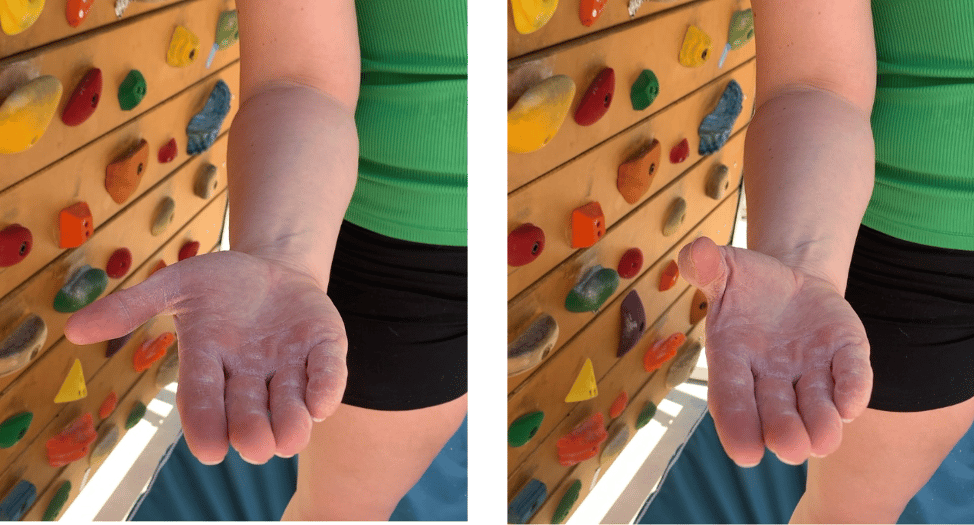
The tendon sheath produces synovial fluid, which acts to reduce frictional forces on the tendons during everyday actions involving the thumb. With this condition, repetitive gliding of these tendons can create shearing forces and subsequent microtrauma (9). The tendons and their sheath lie underneath the extensor retinaculum: a fibrous band of tissue that holds the tendons of the extensor muscles in place. Thickening of the extensor retinaculum has been associated with De Quervain’s (2,3,9), and in severe cases, extensor retinaculum thickening has been shown to be three to four times greater than normal (5).
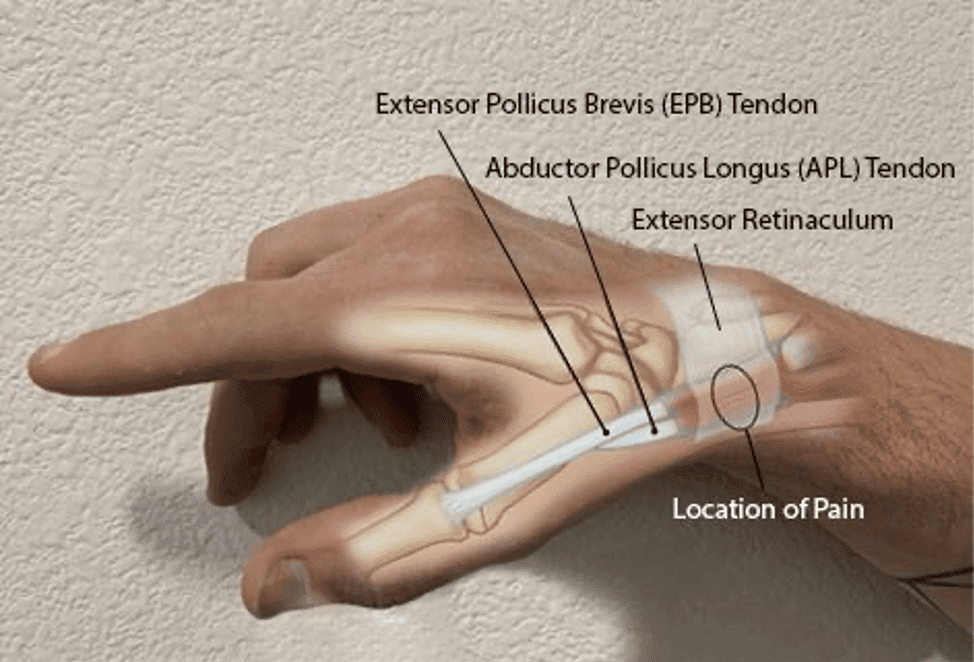
Activities that involve forceful grasping with ulnar deviation or awkward wrist positions may predispose or exacerbate the issue (2,4,9). Some individuals exhibit anatomical variations in this region of the wrist, which may also be a factor in developing De Quervain’s (7).
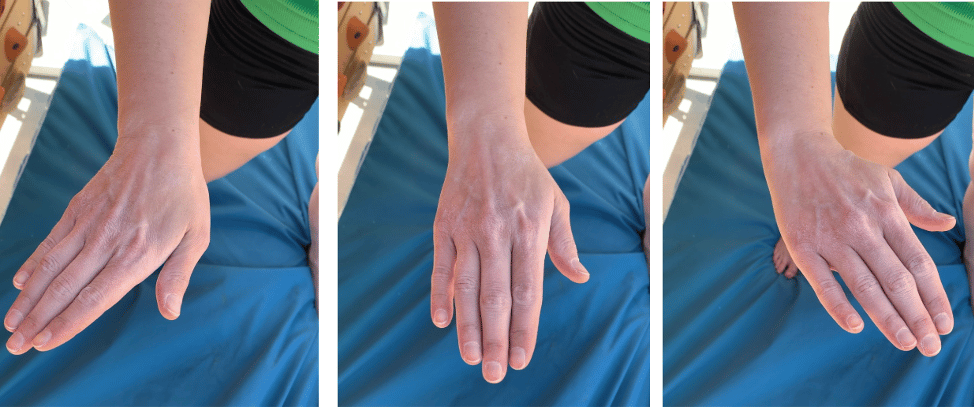
During rock climbing, our wrist and hand take on a variety of different positions as we make our way up the wall. The thumb in particular may participate in several ways; however, it is commonly involved when performing pinch grips. The pinch is a wildly complex movement, requiring the coordination of both extrinsic and intrinsic muscles of the hand and thumb. There are eight different muscles involved with the movement of the thumb, and depending upon the type of pinch grip, hand/wrist positioning, and direction of force, some muscles and their associated tendons may have more involvement than others.
With the wrist positioned in neutral, the major thumb muscles involved in the act of pinching an object are the adductor pollicis and the opponens pollicis muscles, as it pulls our thumb inward toward our palm and toward the rest of our digits. In this position, the APL and EPB tendons associated with De Quervain’s are placed at minimal stress.

The APL and EPB tendons may become aggravated however when grabbing high front-facing vertical pinches. When grabbing this hold type, the wrist is forced into excessive ulnar deviation, which may place strain on the tendons as you apply load (shown below). From this position, the climber must then resist downward forces to the thumb as the body moves up to the next hold. Hangboarding or training with this type of vertical pinch grip can also be aggravating to the region.
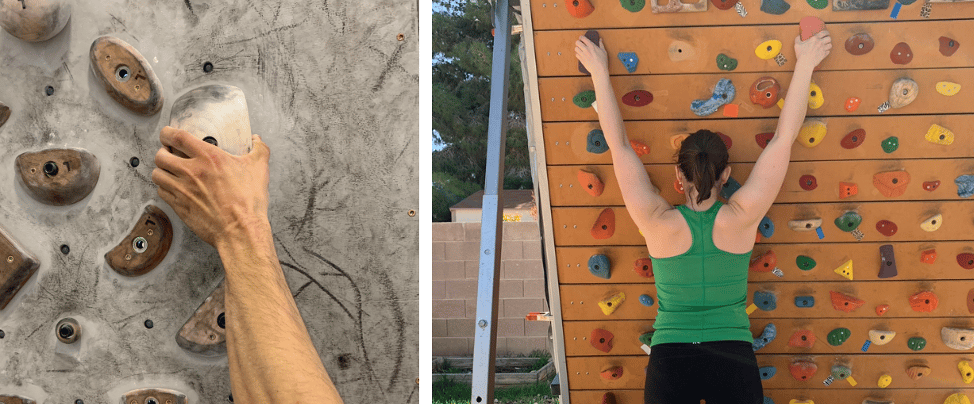
Other potential sources of irritation may be due to repeated closed crimping, which places the thumb joint in abduction and extension (shown left). With an open hand, climbers may also be unknowingly straining these tendons by over-engaging the thumb with a 3 finger drag grip, instead of allowing the thumb to relax by its side (shown right).

With multipitch or big wall climbing, other factors may be worth noting as well, as this type of climbing could potentially cause repetitive stressors to the thumb while jumaring, hauling, and top down belaying.
The climber mentioned in the beginning of this article has a 9-5 job, which most likely involves a lot of repetitive typing and computer mouse work. In addition, the climber seems to do other things that involve repetition of the thumb, such as texting and playing video games. It is possible that the climber developed this condition not from climbing initially, but from his repetitive daily activities. The bouldering project could have exacerbated his pre-existing problem.
Signs and Symptoms of De Quervain’s Tenosynovitis include:
- Swelling of the radial (thumb side) of the base of the wrist
- Pain with near the base of the thumb
- Aggravation of symptoms with repeated gripping, pinching, or grasping
- Decreased pinch or grip strength (6)
Assessment
The Finkelstein Test
The Finkelstein Test is the most commonly performed test to diagnose De Quervain’s Tenosynovitis. The individual places his or her thumb inside of the fist as the examiner passively moves the thumb into ulnar deviation. A positive test is indicated by a subjective report of pain at the base of the thumb.
Treatment Strategies: The Rock Rehab Pyramid
The rock rehab pyramid was developed by physical therapist and rock climber Dr. Jared Vagy in his book Climb Injury-Free. This injury prevention and rehabilitation system developed for rock climbers structures the rehabilitation process into four distinct levels with general rules used to determine a climber’s appropriateness for progression to the next level.
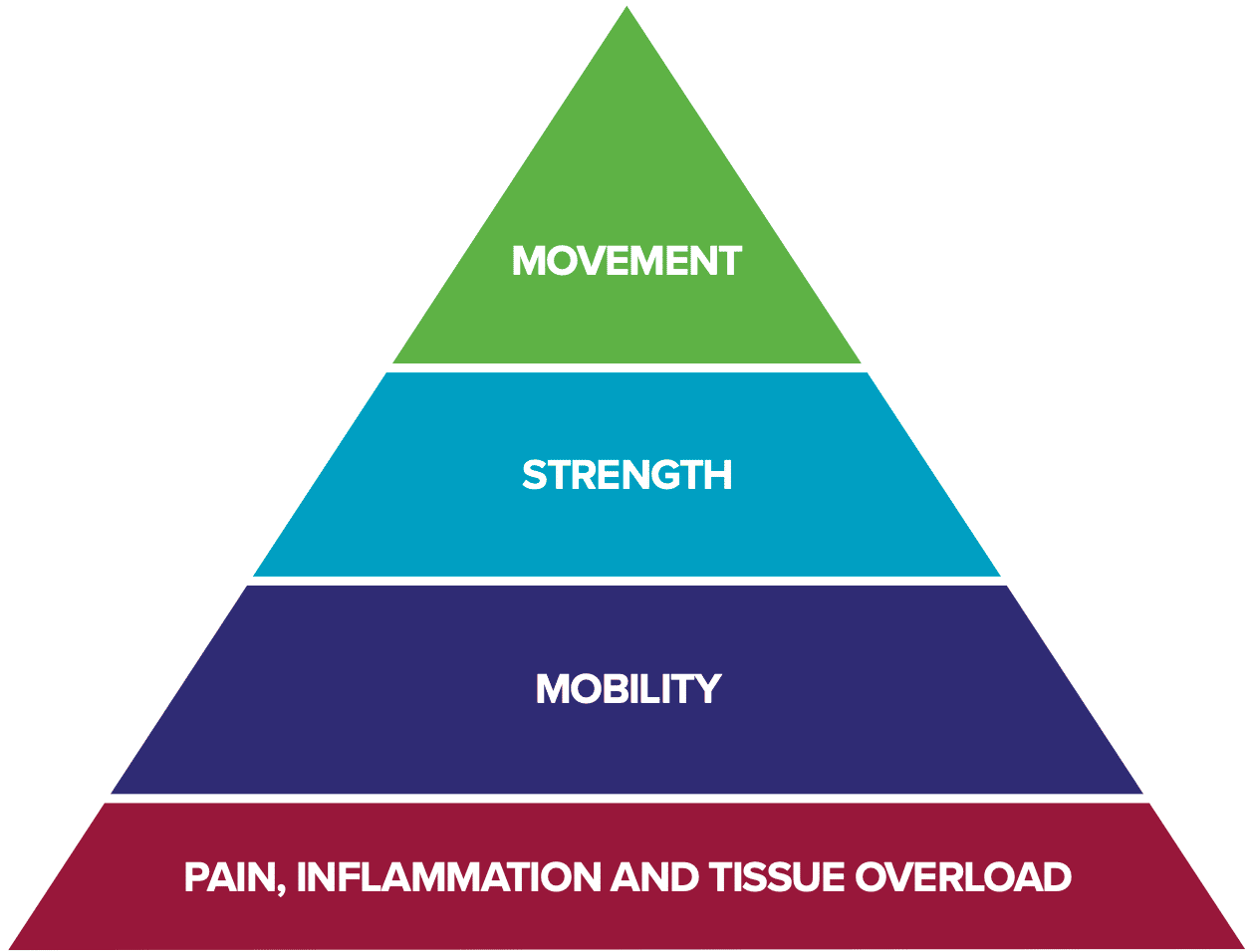
As pictured, the rock rehab pyramid begins after injury and is broken down into the pain, inflammation and tissue overload phase where unloading techniques are used to allow the injured tissue to heal, the mobility phase where techniques are focused on breaking up fibrotic adhesions and promoting tissue mobility, the strength phase to build strength and help prevent future injury, and the movement phase where technique and movement strategies are introduced to promote proper movement mechanics.
Step 1: Unload + Activity Modification
In the case of acute pain and inflammation, avoiding activities that stress the thumb are necessary.
- Take a break from any repetitive activities involving your wrist and hand. This includes texting, typing, playing video games, etc. Perhaps consider a vertical facing computer mouse to decrease the amount of repetitive wrist deviation required.
